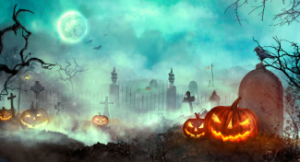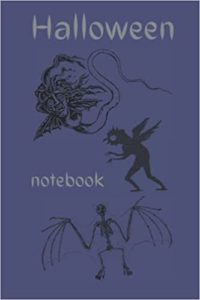 The Haunted History of Halloween is now seen as a traditional celebration, that is held on October 31st. But today, Halloween is celebrated by having Halloween theme costume parties. As well as decorating the house and garden with themed regalia.
The Haunted History of Halloween is now seen as a traditional celebration, that is held on October 31st. But today, Halloween is celebrated by having Halloween theme costume parties. As well as decorating the house and garden with themed regalia.
Along with the entertainment of horror films, haunted houses and other activities. Such as the popular themes of ghosts, werewolves and witches. And other popular supernatural entertainment.
Children love the idea of dressing up in Halloween costumes and go from door-to-door. This usually takes place in their own neighborhood following the old tradition of trick-or-treating. Sometimes receiving gifts of sweets and occasionally sometimes money.
The tradition of Halloween started as an ancient Celtic festival in Great Britain and Ireland. But it has survived most strongly among ‘st the Irish, Scottish and Welsh communities.
The immigrants who lived in these communities carried the tradition to North America. Where it gained popularity. and is still just as popular if not more than it was then.
In turn, and as part of the American pop culture. The Haunted History of Halloween has grown in popularity in most parts of the English speaking western world. And in recent years has become more popular in Western Europe.
Going back to the old days, Halloween was recognized as a pagan festival. This centered around the idea of linking the living souls with the departed.
Where contact became possible between the physical world and the spirit world. Thus allowing the possibility that magical things were more than likely to happen.
Halloween Vintage Style Themed Notebook:
If you are going to a Halloween party, or are interested in writing down unusual happenings or coincidences.
Why not check out these two Halloween notebooks were you can make a note of anything unusual.

Click here For More History of Halloween
But like most of the pagan festivals, they were absorbed into the traditions of the ever expanding Christian church. Therefore becoming associated with All Hallows Day, and or All Saints Day. But under the Gregorian calendar, these days eventually fell on November 1.
A vigil for the festival was eventually held on All Hallows Evening, which was on October 31. In the speech of the day, All Hallows Evening became Halloween, and eventually became the Halloween as we know it today.
We would say that the celebration of Halloween has survived most strongly in Ireland. It also signified the end of summer festival. And quite often was celebrated in each of the communities. This usually entailed having a bonfire with which to ward off the evil spirits.
The children would disguise themselves as creatures from the underworld and go from door to door collecting treats. These were most likely to be mainly fruit and nuts to be used for the festivities.
These were then used for playing the traditional games of the time. Such as eating an apple on a string or bobbing their head in a barrel of water for apples without using their hands.
Another tradition might be to sprinkle salt on the visiting children so to ward off the evil spirits. And also carving out turnips into ghoulish faces. Which would hold candles and become a very popular part of the festival. This creative practice has been adapted to carving pumpkins in America today.
